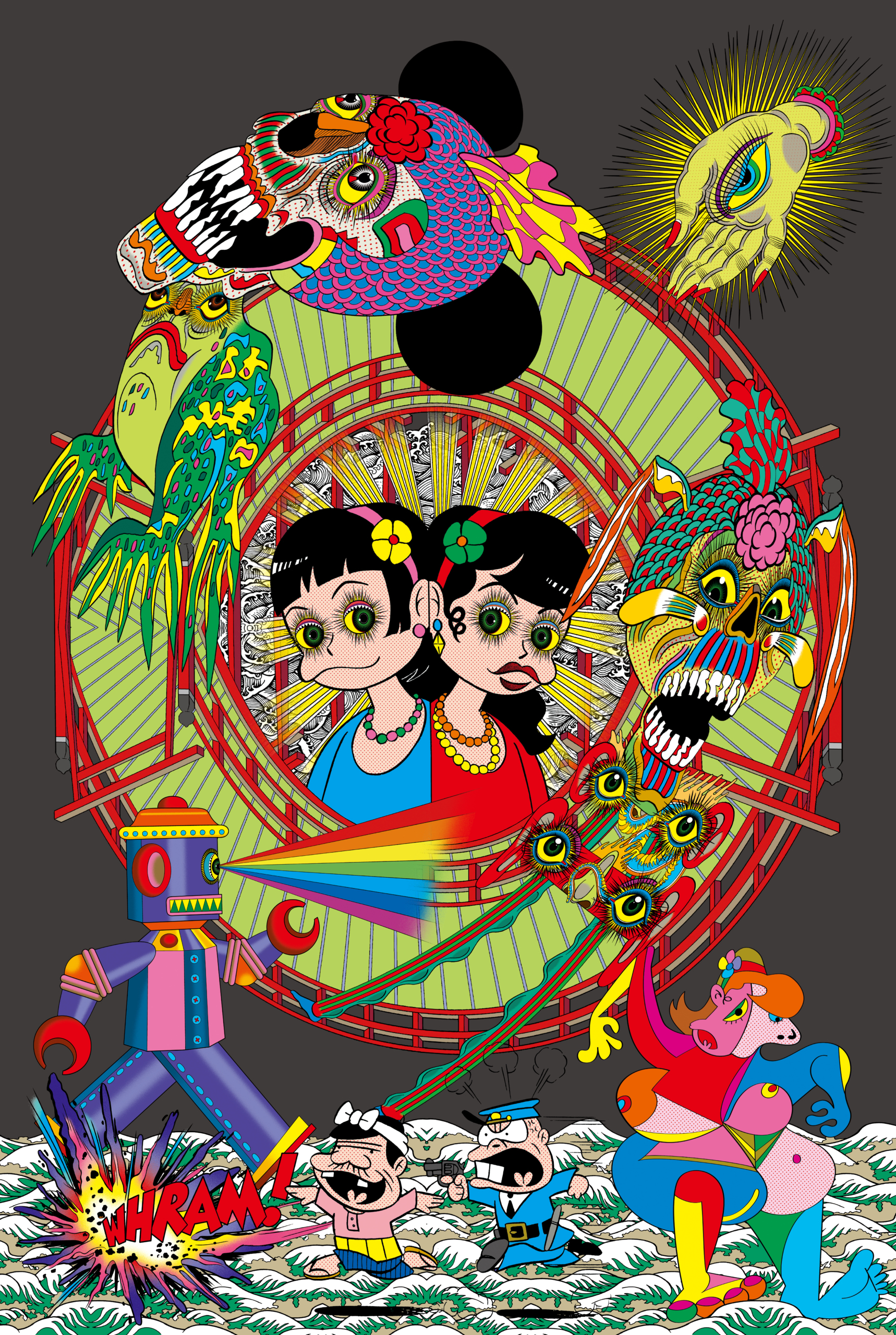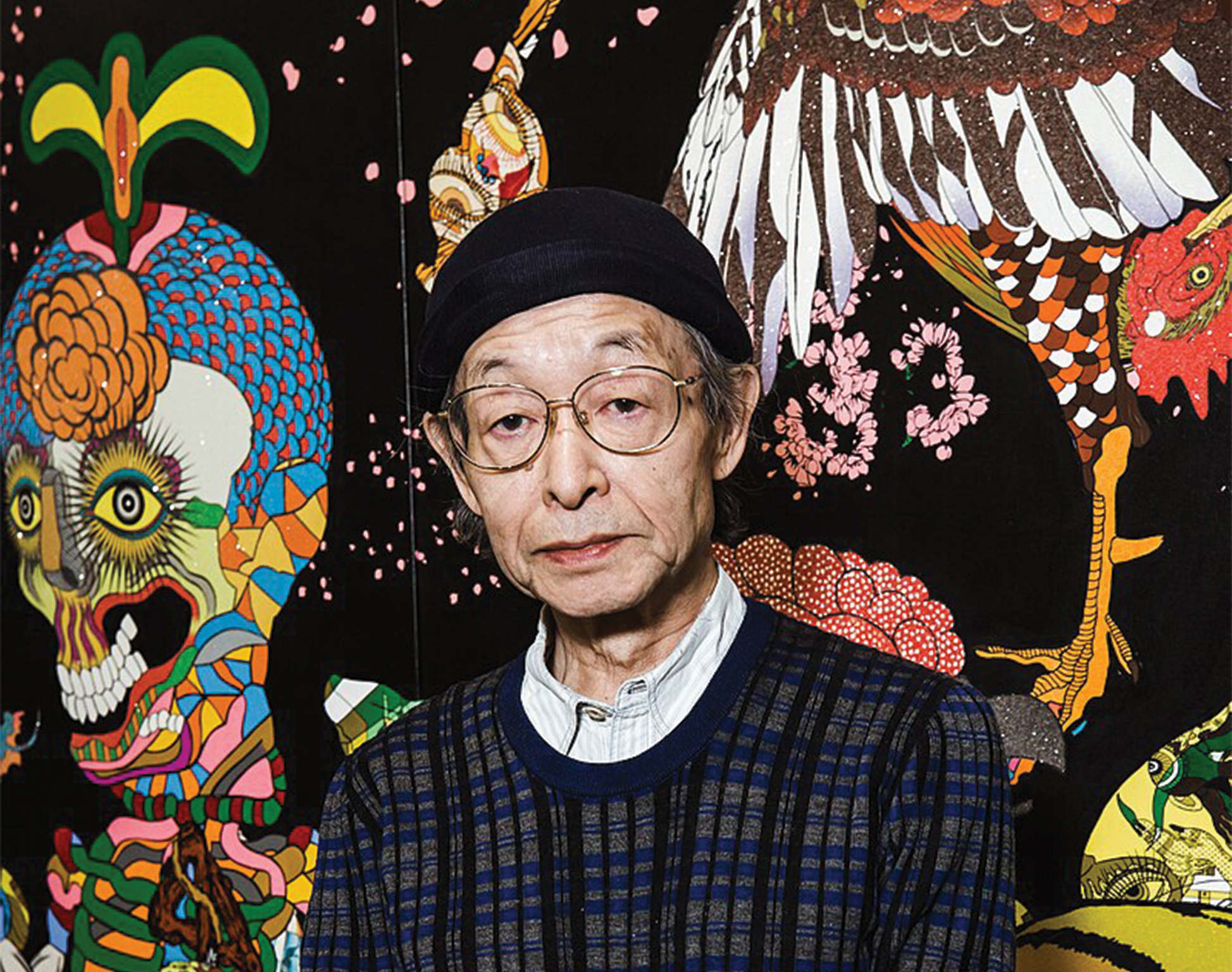It has recently been announced that legendary artist and graphic designer Keiichi Tanaami, who was renowned for his vivid pop style of painting that reflected his childhood memories of World War II, passed away on August 9 of a subarachnoid hemorrhage. He was 88.
The Life and Career of Keiichi Tanaami
Born in Japan’s capital on July 21, 1936, Tanaami was just 8 during the Great Tokyo Air Raid of 1945. Seared into his brain were images of his city on fire, bombs dropping from planes and masses of people desperately fleeing the firestorm. There were also the flashes of the bombs reflecting from his grandfather’s deformed goldfish.
“It is a grotesque form of beauty,” he once said. “The fish tank appearing there amidst the bright light of the flares, strong as the midday sun. In the tank, a deformed goldfish, its scales catching the light, twinkling and luminescent, flutters and sways as it swims. I was scared, but I also felt this excitement running through my whole body when I saw that fish tank. To this day I believe that experience was more intense than any of my hallucinations.”
Tanaami took up drawing from a young age, and he went on to study design at Musashino Art University. In his second year, he won a special selection award at the Japan Advertising Art Exhibition. After graduating, he started working in an advertising agency, but soon quit as he was receiving so many private commissions. In the latter half of the 1960s, Tanaami continued to enhance his reputation by making video art. He also visited New York, coming face to face with the works of Andy Warhol for the first time.

A Leading Figure in Japan’s Underground Art Scene
In 1975, Tanaami became the first art director of the Japanese edition of Playboy magazine. His work became increasingly provocative and experimental, and he was seen as a leading figure in the country’s underground art scene. In recent years, his work has been gaining more and more international acclaim and has been held in the permanent collections of public institutions around the world, including the Museum of Modern Art, New York and the Art Institute of Chicago.
Masashi Nanzuka, a representative of the company to which Tanaami belonged, paid tribute to the esteemed artist: “During his lifetime, Keiichi Tanaami described his recent animations and paintings as ‘the world he will live in after death.’ I am sure that Tanaami’s soul will continue to live forever, happily with his wife, friends and other demons in this paradise that he created. I also sincerely hope that the works that Tanaami poured his heart and soul into will continue to live on in the history of art and in the hearts of everyone in the future.”
Related Posts
- Keiichi Tanaami: Adventures in Memory Exhibition
- Dragon Ball Creator Akira Toriyama Passes Away at Age 68
- Tributes Pour in for Genius Conductor Seiji Ozawa
Updated On August 20, 2024








